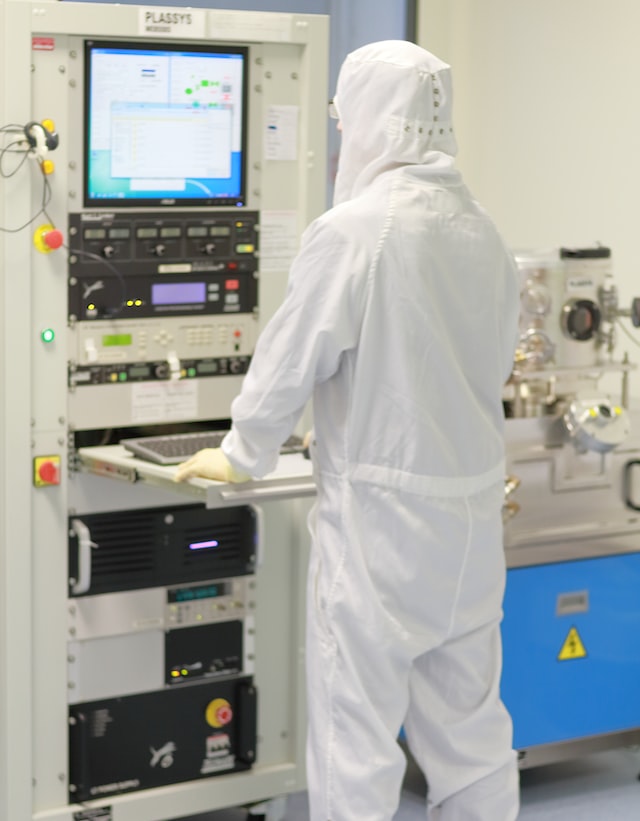With a five-year survival rate of only 9%, mesothelioma remains challenging cancer to treat despite advancements in treatment and research. However, recent advances in nanotechnology have given mesothelioma victims new hope.
Introduction:
Devastating mesothelioma has killed thousands of people around the world. Up until the 1970s, asbestos was a mineral that was often utilized in shipbuilding, construction, and other sectors. The condition has a lengthy latency period, making it challenging to identify and diagnose early. Chemotherapy, radiation therapy, and surgery make up the typical mesothelioma treatment. The five-year survival rate for mesothelioma is only 9%, despite current treatments. As a result, doctors are continuously looking for novel and creative ways to treat this condition. The application of nanotechnology to the treatment of mesothelioma is one promising area of research.

Nanotechnology: What is it?
The atomic, molecular, and supramolecular manipulation of matter is known as nanotechnology. It makes use of components and materials that are no larger than 100 nanometers in size. These items are perfect for use in medical treatments due to their small size, which enhances their ability to penetrate cells and tissues.
How Can Mesothelioma Be Treated With Nanotechnology?
Drugs and other therapeutic substances can be delivered to cancer cells directly via nanotechnology. Drug delivery that is targeted is what this is. In order to lessen the adverse effects of chemotherapy and radiation therapy, researchers are working on a method of delivering medications directly to cancer cells. Furthermore, mesothelioma imaging can be improved by nanotechnology, facilitating early illness detection and diagnosis.
What kinds of nanoparticles are used in the treatment of mesothelioma?
Many different kinds of nanoparticles are being researched for use in mesothelioma treatment. Liposomes, dendrimers, and gold nanoparticles are a few of these. Drugs can be enclosed in spherical formations called liposomes, which can shield them from deterioration. Dendrimers are nanometer-sized, highly branching polymer structures that are also capable of encasing medications. Gold nanoparticles are tiny gold particles that can be employed to improve mesothelioma imaging.
Cisplatin liposomal:
A liposome-encapsulated version of cisplatin is known as liposomal cisplatin. A chemotherapy medicine called cisplatin is frequently used to treat mesothelioma. Researchers intend to improve the drug’s effectiveness and lessen negative effects by encapsulating cisplatin in a liposome. Clinical trials are actively looking into the use of liposomal cisplatin to treat mesothelioma.
Therapies Using Dendrimers:
For the treatment of mesothelioma, dendrimers are being looked into as a possible drug delivery mechanism. Drugs can be encapsulated in dendrimers to prevent their deterioration. Furthermore, dendrimers are perfect for targeted medication delivery since they may target particular cells and tissues.
Gold Nanoparticles
The use of gold nanoparticles to improve mesothelioma imaging has been studied. MRI contrast agents or fluorescent dyes can be used to mark gold nanoparticles, which can subsequently be utilized to identify cancer cells. Mesothelioma cells have been found in animal tests to assemble gold nanoparticles, increasing their visibility on imaging scans. Using gold nanoparticles to deliver chemotherapeutic medications directly to cancer cells is another research area.
Vaccines based on nanoparticles:
A novel and promising method of treating mesothelioma is the use of nanoparticle-based vaccinations. Nanoparticles are used in these vaccinations to introduce tumor antigens to the immune system. This aids the immune system’s ability to identify and combat cancer cells. Preclinical studies are now being conducted to examine these vaccinations.
The Function of Nanotechnology in Combination with Immunotherapy
Immunotherapy is a type of therapy that combats cancer by utilizing the body’s natural immune system. In the case of mesothelioma and other cancer types, it has produced encouraging outcomes. The synergistic effects of combining nanotechnology and immunotherapy may boost the potency of both treatments. For instance, directly administering immunotherapy medications to cancer cells using nanoparticles may increase the response rate.
Limitations and Obstacles
Although there is considerable potential for using nanotechnology to cure mesothelioma, there are still a number of obstacles to be solved. For instance, before using nanoparticles on humans, their safety must be determined. Nanoparticle stability and shelf life can also be problematic. And finally, creating and delivering nanoparticles can be expensive.
Research Status Currently

Several clinical trials are currently looking into the application of nanotechnology in the management of mesothelioma. In these studies, various nanoparticle forms, including dendrimers and liposomes, are tested for their potential to transport medications and improve imaging. Preclinical research is also being done to assess the security and effectiveness of vaccines and immunotherapies based on nanoparticles.
Upcoming directions
There is still much to learn about the application of nanotechnology to the treatment of mesothelioma as it is a relatively new area of study. The development and improvement of nanoparticles for mesothelioma therapy will continue in the future. They will also look into novel and creative applications of nanotechnology, such as combining it with other therapies like immunotherapy.
Researchers are optimistic
Mesothelioma is a rare and severe type of cancer brought on by asbestos exposure. Despite medical advancements, mesothelioma is still a challenging illness to treat, with a five-year survival rate of only 9%. However, recent advances in nanotechnology have given mesothelioma victims new hope. Nanotechnology has the potential to improve imaging, deliver medications directly to cancer cells, and even stimulate the immune system to fight the disease. Despite the fact that mesothelioma treatment using nanotechnology is still in its infancy, researchers are optimistic that it may eventually result in novel and potent therapies.
Importance of early diagnosis
To increase the likelihood of survival, mesothelioma must be diagnosed as soon as possible. The early detection of the disease may be greatly aided by the use of nanotechnology in imaging and diagnosis.
Tobacco Ban
The best strategy to prevent mesothelioma is to limit your exposure to asbestos, which is the primary cause of the disease. To lower the incidence of mesothelioma cases worldwide, asbestos must be banned.
Resources and Assistance
Throughout the course of treatment, mesothelioma sufferers and their families require financial and emotional assistance. It is crucial that patients have access to tools including support networks, financial aid, and legal counsel. In addition, funding and promotion of mesothelioma research as well as the development of novel treatments, particularly those involving nanotechnology, is greatly aided by research foundations and organizations.
Conclusion:
In conclusion, mesothelioma is a challenging illness to treat, but recent advances in nanotechnology have given patients new hope. Targeted drug delivery and imaging using nanoparticles may enhance patient outcomes and pave the way for more potent new treatments. To fully grasp the promise of nanotechnology in the treatment of mesothelioma, more study is required to overcome the remaining obstacles and restrictions. The fight against mesothelioma also requires an early diagnosis, the banning of asbestos, and support services. To enhance patient treatment options and eventually find a cure for mesothelioma, it is critical to support and fund research in this area.






